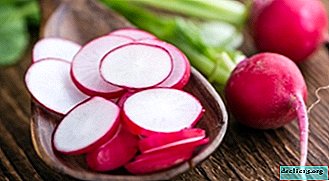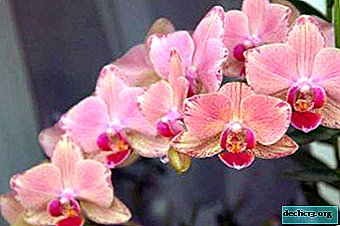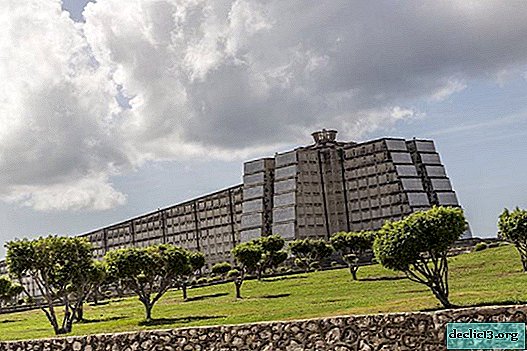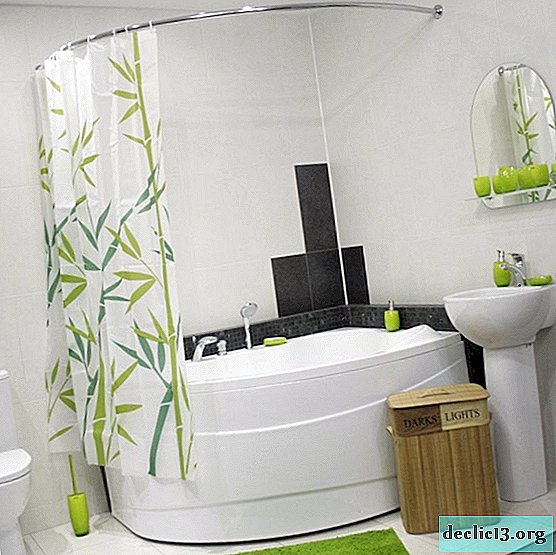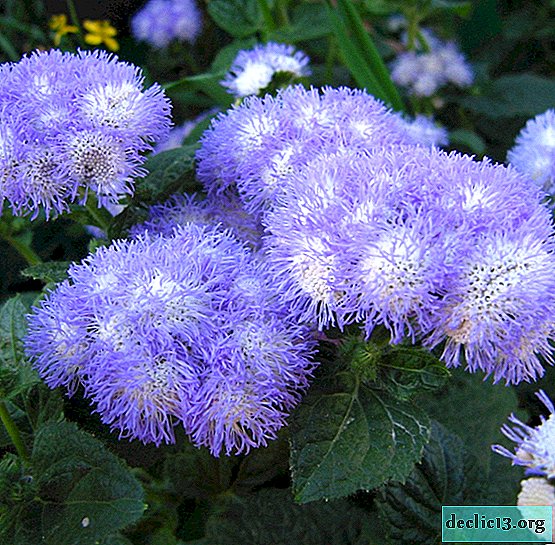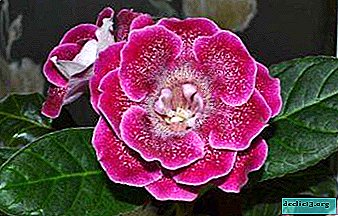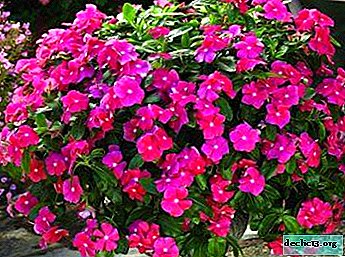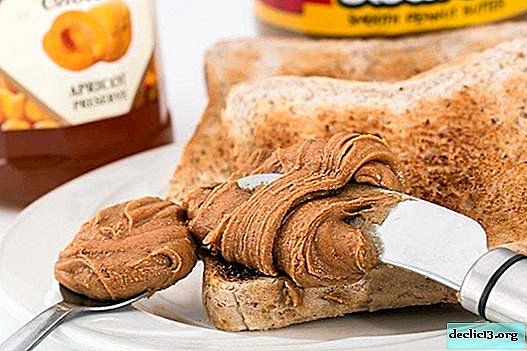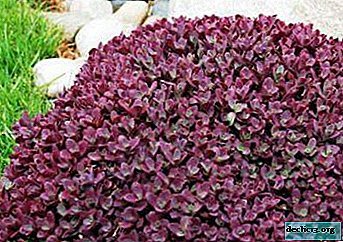We find out how to feed begonia: the best fertilizers for plentiful flowering at home
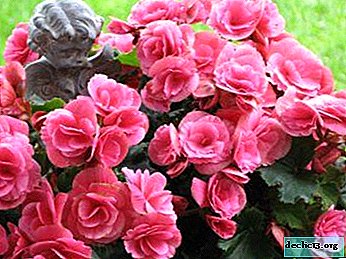
Begonia is one of the most common decorative deciduous and flowering plants.
Florists use this plant for landscaping the garden and as a decor for living quarters, since begonia, with equal success, grows indoors and outdoors.
Such a plant will ideally fit into any setting or bring its own zest to it, dilute the common habitual flavor. But in order for her to please household members with her beauty for a long time, you need to know the simple rules of care and how to feed her.
Plant description
Begonia is a grassy, shrubby or semi-shrubby plant of the Begoniaceae family. Root tuberous or creeping thickened tuberous rhizome. The leaves are asymmetrical, oblong, often green-red. The flowers of the plant are irregular, unisexual and monoecious. Perianths are uneven, brightly colored. The fruit is a box. Propagated by seeds, leaves, cuttings. The ranges of begonia origin are Mexico, Asia, India, Africa, and South America.
What is top dressing?
 Top dressing is the application of phosphorus-potash and nitrogen fertilizers to the soil of a plant.
Top dressing is the application of phosphorus-potash and nitrogen fertilizers to the soil of a plant.
- Phosphoric Potash Fertilizers used once every two weeks, starting from the moment of flowering.
Such an intervention will increase the flowering period and the number of buds, the plant will look more healthy.
- Nitrogen Fertilizers applicable only to deciduous begonia, as they can inhibit the development of buds, but improve leaf growth. When using such top dressing, there is an active build-up of green mass, but flowering plants can never wait. What to do if the begonia does not bloom, you will learn in this article.
Watering Rules
In order for the plant to grow and develop well, you need to follow the simple rules of watering:
- Do not use hard water from the water supply, but first it must be defended for a day, and then boil or filter. You can also use, to soften water, garden peat - 1 kilogram per 10 liters of water.
- At moderate air temperatures, watering should be uniform and preferably at the same time, preferably in the morning.
- In the summer, watering should be plentiful, but every other day, so as not to flood the plant.
- In winter, it is worth watering the plant as the soil dries, usually enough to water once a week. In cold weather, it should be watered with warm water.
- After watering, when the earth dries slightly, it is necessary to loosen the top layer of soil to a depth of 1 centimeter. Such a simple maneuver will help to maintain soil moisture inside the pot longer.
- For watering begonias, you can apply - a way to immerse the pot. To do this, pour soft water into a container in which you can put the pot. Put the pot with the plant in the water and wait until the soil nourishes the water through the drainage holes at the bottom of the pot. After 20-30 minutes, remove the pot from the water and place on a pallet.
How to fertilize at home?
You can feed begonia with a ready-made product purchased in a specialized store, or you can use a folk remedy of home cooking.
Folk remedies
At home, you can prepare the following fertilizers for begonia:
Yeast
To prepare the solution you need:
- In 1 liter of warm water, dilute 1 gram of dry yeast and 1 teaspoon of sugar.
- Insist the mixture for 3 hours.
- Before dressing, this mixture must be diluted again in clean water in a ratio of 1: 5.

You can water begonia with such a solution 5 times a year.
reference. Yeast contains the hormones cytokinins and auxins, which contribute to the active growth and full development of begonia. They accelerate the mineralization of organic substances, produce phosphorus and nitrogen. This top dressing is equivalent to the use of expensive mineral fertilizers.Sugar
 Sweet solution used as a direct source of glucose. In order to fertilize the plant, it is enough to dilute 1 tablespoon of sugar in 1 liter of water and pour the solution over the plant.
Sweet solution used as a direct source of glucose. In order to fertilize the plant, it is enough to dilute 1 tablespoon of sugar in 1 liter of water and pour the solution over the plant.
It should be remembered that such a dose of glucose is not recommended more often than 1 time in 30 days.
Tea leaves
- Previously used tea leaves must be dried.
- Feeding is necessary in the process of begonia transplantation. The soil just needs to be mixed with dry tea in a ratio of 1: 3.
- After planting, it is important to water it abundantly.
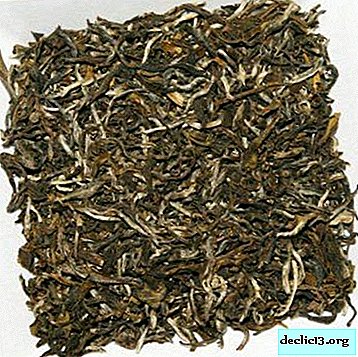
Citrus peel
- Dried peels of orange, lemon or mandarin need to pour steep boiling water. For 1 liter jar, you need to take 80% of dry crusts.
- The broth needs to be cooled and insisted for 5 hours.
- After the product must be diluted with water in a ratio of 1: 5.

Water the plant with citrus water no more than 1 time in 30 days. If watering is more frequent, an acidic environment can destroy the root system.
Eggshell
To prepare the irrigation solution, you need:
- Grind the eggshell into powder, and pour it with warm water in a ratio of 1: 5.
- Insist 15 days, mix once every 3 days.

Watering the plant with such a solution can be done no more than 1 time in 30 days.
Banana peel
 Banana peel needs to be dried and pulverized. Sprinkle the soil in a pot with begonia with such a powder and water it abundantly. Perform this procedure once a month.
Banana peel needs to be dried and pulverized. Sprinkle the soil in a pot with begonia with such a powder and water it abundantly. Perform this procedure once a month.
The best result would be if the banana powder was mixed with the soil before planting the plants in it.
Wood ash
- To prepare the irrigation solution, you need to dilute 3 tablespoons of wood ash in 1 liter of water.
- The solution must be infused for 7 days.

Water begonia costs 1 time in 14 days. This tool works well as a fertilizer. In this case, it should simply be mixed with soil before planting the plant.
Professional Products
There are factory products that are designed to feed domestic plants:
Kemira Suite
 It's floral fertilizer is applied to the soil and covered with soil to a depth of 1-2 centimeters. Above you need to water abundantly.
It's floral fertilizer is applied to the soil and covered with soil to a depth of 1-2 centimeters. Above you need to water abundantly.
The packaging shows a dosage of 60 grams per square meter. Enough 2 treatments per year. You can water the plant with a solution in the proportion of 1 tablespoon of the product per 10 liters of water. Such watering can be repeated up to 2 times a month.
The average price is 70 rubles.
Good power
 For root dressing, you need to dilute 1 cap of the product in 10 liters of water.
For root dressing, you need to dilute 1 cap of the product in 10 liters of water.
During the period of active growth, water the plant once a week, in the cold period of time, water 1 time per month.
The average price in Russia is 300 rubles.
Bona forte
 The tool is suitable for root dressing. 10 milliliters of the drug is diluted in 1.5 liters of water.
The tool is suitable for root dressing. 10 milliliters of the drug is diluted in 1.5 liters of water.
In the spring, watering begonia with a solution costs 1 time per week, and in winter 1 time per month.
The price in Russia is 180-200 rubles.
Fertika Suite
 To feed the plant, you need to dilute 1 tablespoon of the product in 10 liters of water. Can apply the solution at every watering in the summer and every third watering in the winter.
To feed the plant, you need to dilute 1 tablespoon of the product in 10 liters of water. Can apply the solution at every watering in the summer and every third watering in the winter.
The average price is 70 rubles.
Mr color
 For root dressing, it is worth diluting half the cap of the product in 1 liter of water.
For root dressing, it is worth diluting half the cap of the product in 1 liter of water.
Water the plant with a solution during the period of active growthbut not more than 1 time per week.
The average price is 50-75 rubles.
What is needed for plentiful flowering?
Phosphorus contributes to the laying of flower buds, abundant and prolonged flowering. It is after a period of active growth, in the period of budding, you need to carry out potassium-phosphorus top dressing in the complex. At this time, the dose of potassium salts should not exceed 1.5 grams per 1 liter of water.
Note! Phosphorite flour will be an ideal way to meet the phosphorus needs, it must be poured into the soil for begonia, at the rate of 70 grams per 1 meter square of soil.Errors and their consequences
If, when feeding plants, one does not adhere to the specified norms for certain agents, then such Negligence can entail a number of consequences:
- If the plant is overfed, it may die.
- Oversaturation of the plant with organic or mineral fertilizers can lead to death, it is necessary to alternate fertilizers.
- If the plant is only planted or replanted, it can not be fed for a month, a weak seedling can slow down the development of the root system.
- If the plant is sick, its top dressing should be carried out carefully and start with small doses, since in case of illness the roots of the plant are weakened and it can perceive nutrients as a destructive component.
- Top dressing during flowering or dormancy can destroy the plant.
Conclusion
For begonia to grow and develop, flourish and multiply abundantly, it requires increased attention to itself. The main thing is care, which consists in timely watering and dressing the plant. A review of the most popular home and purchased fertilizers will help even novice growers to keep their beautiful begonia in perfect condition.



